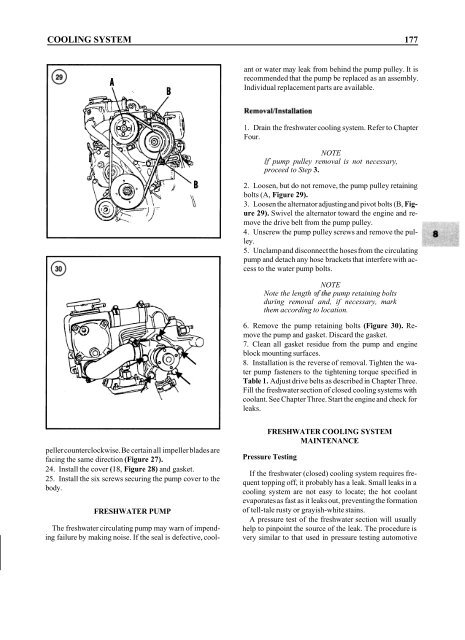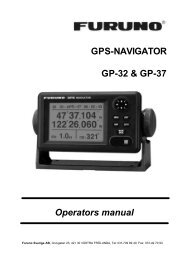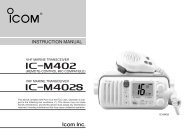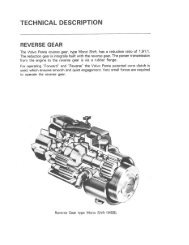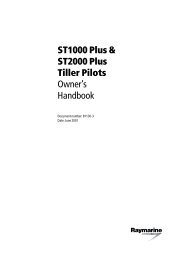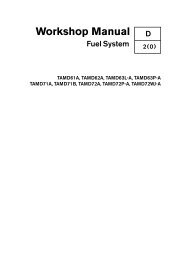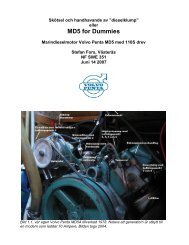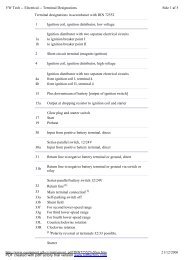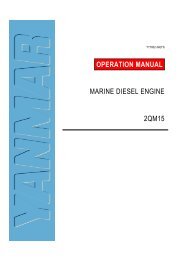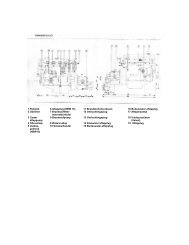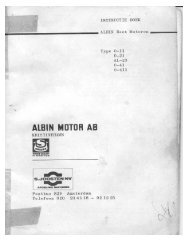Create successful ePaper yourself
Turn your PDF publications into a flip-book with our unique Google optimized e-Paper software.
COOLING SYSTEM 177<br />
ant or water may leak from behind the pump pulley. It is<br />
recommended that the pump be replaced as an assembly.<br />
Individual replacement parts are available.<br />
1. Drain the freshwater cooling system. Refer to Chapter<br />
Four.<br />
NOTE<br />
If pump pulley removal is not necessary,<br />
proceed to Step 3.<br />
2. Loosen, but do not remove, the pump pulley retaining<br />
bolts (A, Figure 29).<br />
3. Loosen the alternator adjusting and pivot bolts (B, Figure<br />
29). Swivel the alternator toward the engine and remove<br />
the drive belt from the pump pulley.<br />
4. Unscrew the pump pulley screws and remove the pulley.<br />
5. Unclamp and disconnect the hoses from the circulating<br />
pump and detach any hose brackets that interfere with access<br />
to the water pump bolts.<br />
NOTE<br />
Note the length ofthe pump retaining bolts<br />
during removal and, if necessary, mark<br />
them according to location.<br />
6. Remove the pump retaining bolts (Figure 30). Remove<br />
the pump and gasket. Discard the gasket.<br />
7. Clean all gasket residue from the pump and engine<br />
block mounting surfaces.<br />
8. Installation is the reverse of removal. Tighten the water<br />
pump fasteners to the tightening torque specified in<br />
Table 1. Adjust drive belts as described in Chapter Three.<br />
Fill the freshwater section of closed cooling systems with<br />
coolant. See Chapter Three. Start the engine and check for<br />
leaks.<br />
peller counterclockwise. Be certain all impeller blades are<br />
facing the same direction (Figure 27).<br />
24. Install the cover (1 8, Figure 28) and gasket.<br />
25. Install the six screws securing the pump cover to the<br />
body.<br />
FRESHWATER PUMP<br />
The freshwater circulating pump may warn of impending<br />
failure by making noise. If the seal is defective, cool-<br />
FRESHWATER COOLING SYSTEM<br />
MAINTENANCE<br />
Pressure Testing<br />
If the freshwater (closed) cooling system requires frequent<br />
topping off, it probably has a leak. Small leaks in a<br />
cooling system are not easy to locate; the hot coolant<br />
evaporates as fast as it leaks out, preventing the formation<br />
of tell-tale rusty or grayish-white stains.<br />
A pressure test of the freshwater section will usually<br />
help to pinpoint the source of the leak. The procedure is<br />
very similar to that used in pressure testing automotive


